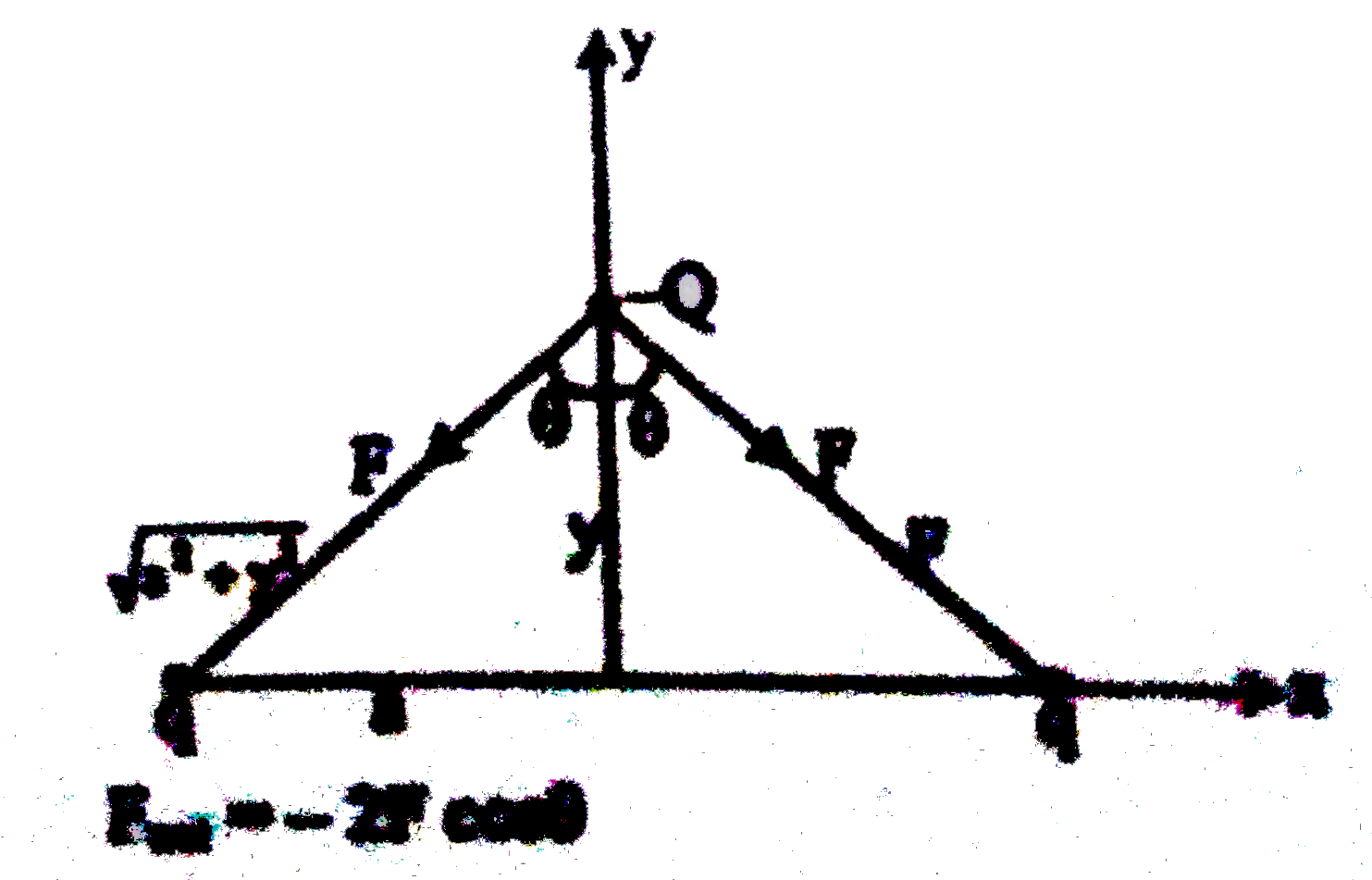two similar point charge + q are kept on x- axis at (-a,0)& (a,0) and another charge -Q of mass m Is kept at origin .If -Q si slightly displaced along y- axis & released them its time period of oscillation is -
2π√πε0ma32Qq
2π√πε0ma3Qq
2π√2πε0ma3Qq
none of these
The correct Answer is:C

=−2kQq(a2+y2)√a2=y2
fnet=−Qqy2π∈0(a2+y2)3/2
for y ltlta
Fnet=−Qqy2πε0a3
a=Fnetm=−Qq2πε0ma3=−ω2y
ω2=Qq2πε0ma3
ω=√Qq2πε0ma3
T=2πω=2π√2πε0ma3Qq
Topper's Solved these Questions
Similar Questions
Two identical positive charges Q each are placed on the x axis at point (-a,0) and (a,0) A point charge of magnitude q is placed at the origin. For small displacement along x axis, the charge q executes simple harmonic motion if it is poitive and its time period is T1. if the charge q is negative, it perform oscillations when displaced along y axis. in this case the time period of small oscillations is T2. find T1T2
View SolutionTwo charges 4q and -q are kept on x-axis at (−d2,0) and (d2,0) resp. Then charge +q is moved from origin to x=d via semicircular path . Find change in its energy.
View Solution
Knowledge Check
Two small particles P and Q each of mass m are fixed along x-axis at points (a,0) and (-a,0). A third particle R is kept at origin. Then
Aif particle R is displaced along x-axis it will start oscillating.Boscillations of R along x-axis are simple harmonic in natureCif R is displaced of R along y-axis, it starts oscillatingDoscillations along y-axis may be simple harmonic in nature.Two equal charges q are kept fixed at −aand+a along the x-axis. A particle of mass m and charge q2 is brought to the origin and given a small displacement along the x-axis, then
Athe particle executes oscillatory motionBthe particle remains stationaryCthe particle executes SHM along x-axisDthe particle executes SHM along y-axisTwo equal charges q are kept fixed at a and +a along the x-axis. A particle of mass m and charge q2 is brought to the origin and given a small displacement along the x-axis then
Athe particle executes oscillartory motionBthe particle remains stationaryCthe partiel executes, SHM along x-axisDthe particle executes SHM along y-axis
Two point charges Q are kept fixed on XY-plane at points A(0, d) and B(0, -d). Another point charge -q with mass m is held at a point, on the positive side of X-axis that is at the distance 2d from both the fixed point charges. What will be the magnitude of acceleration of the negative point charge (i) just after it is released from its location? (ii) at an instant it crosses the origin?
View SolutionPoint charges +4q,−q and +4q are kept on the x-axis at points x=0,x=a and X=2a respectively, then
View SolutionPoint charges +4q,−q are kept on the x-axis at points x=0,x=a and X=2a respectively, then
View SolutionIn the figure, two point charges +qand−q are placed on the x-axis at (+a,0)and(−a,0) respectively. A tiny dipole of dipolem moment (p) is kept at the origin along the y-axis. The torque on the dipole equals

View SolutionTwo charges, each equal to q, are kept at x=−a and x=a on the x-axis. A particle of mass m and charge q0=q2 is placed at the origin. If charge q0 is given a small displacement (y<<a) along the y-axis, the net force acting on the particle is proportional to
View Solution
